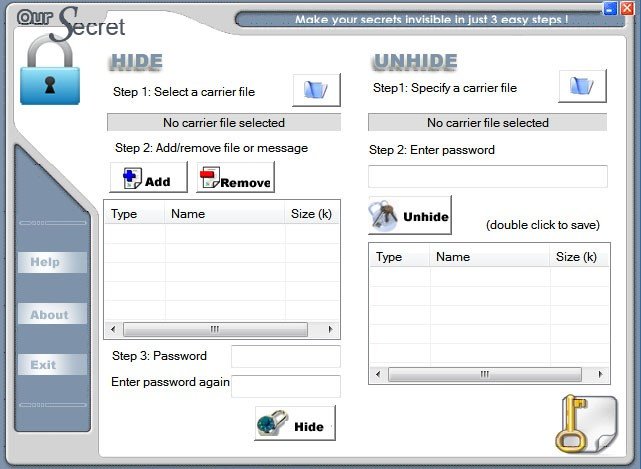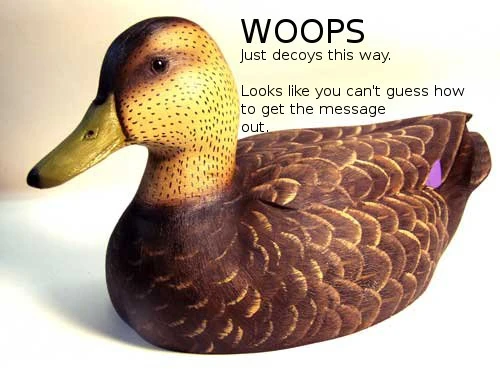- Is there no way to obtain Outguess Rebirth for Wiondows 10? This thread is archived. New comments cannot be posted and votes cannot be cast. 6 points 8 months ago. Don't use rebirth.
- SilentEye; SilentEye is a cross-platform application design for an easy use of steganography, in this case hiding messages into pictures. It provides a pretty nice interface and an easy integration of new steganography algorithm and cryptography process by using a plug-ins system.

File:Steganalysis.jpg Nominated for Deletion[edit]
OutGuess was abandoned and the official website was shut down in September 2015. A fork called OutGuess Rebirth (OGR) was released in 2013 by Laurent Perch, with some bug fixes and a graphical user interface for Windows. After its last version 1.3 from September 28, 2015 it was also abandoned and in 2018 its website went offline.
An image used in this article, File:Steganalysis.jpg, has been nominated for deletion at Wikimedia Commons in the following category: Deletion requests July 2011
|
| A discussion will now take place over on Commons about whether to remove the file. If you feel the deletion can be contested then please do so (commons:COM:SPEEDY has further information). Otherwise consider finding a replacement image before deletion occurs. This notification is provided by a Bot --CommonsNotificationBot (talk) 20:40, 12 July 2011 (UTC) |
There's a problem with the [ [ File:Steganalysis.jpg | Steganalysis picture ] ]. It may be not clear whether the author gave permission. Related discussion can be found here. Blackvisionit (talk) 20:56, 12 July 2011 (UTC)
Closed seciont. Problem solved. Deletion request reject. Blackvisionit (talk) 14:46, 30 July 2011 (UTC)
Spamming from Bmpsecrets[edit]
Repeated spam fron this user who is tryingto link to the website where he's selling.Also a lot of unsourced and pretty vaguepromotional style comments. ZipoBibrok5x10^8 (talk) 12:26, 25 May 2012 (UTC)
EL Policy interpretation[edit]
Due to a recent edit by User:Drmies there's a need to apply some discussion about the usage of EL in this article. What it's surely clear is that adding EL to each software implementation would immediately turn out the article into a spam factory and must be strictly avoided. What it's to be discussed is: the linking to external software directories focused only about steganography with a DMOZ-like approach and the linking to conference's papaers focused about steganography. Analyzing 1 by 1:
- jjtc . com is the most extensive directory known into the web about steganography only, no advertising, features exact listing by a objective point of view
- stegano . net is a very extensive directory about the subset of steganography software also covered by serious papers
- cotse . com is an integration that can be considered optional because of a limited coverage and informal description of software
- Performance study of common image steganography and steganalysis techniques is a paper about steganalysis
- Analyzing steganography softwares is a brilliant article about practical steganalysis of some software
- Hide and Seek: An Introduction to Steganography is a paper about steganalysis
- Defending against statistical steganalysis is a paper about steganalysis
- Constructing good covering codes for applications in steganography is a paper about steganalysis resistance
Adobe photoshop free download for mac os x 10.7 5. The existing links are therefore completely inherent to the article (implementation & drawbacks towards steganalysis).
- Information Hiding: types and applications (from WVU'08) are slides about implementation
- Steganography and Steganalysis: past, present, and future (from WVU'08) are slides about steganalysis
- Identification of Synthetic Images (from WVU'08) are slides about steganalysis
- Natural image statistics and their applications in Digital Image Forensics (from WVU'08) are slides about steganalysis
- Steganography: Digital Data Embedding Techniques Overview (from scientist.by) is a webinar about implementation
The removed links are therefore also completely inherent to the article. If you have any doubts about these resources you should read each paper and discuss it 1 by 1. At the end of the discussion I expect that you will remove the EL tag from the article that's been always extremely balanced. ZipoBibrok5x10^8 (talk) 09:13, 28 November 2012 (UTC) Download navicat for mac.
- I'd hate to not meet your expectations, of course. Note I haven't touched those directories, though I could--so let's look at them. All three of them are what might be called annotated bibliographies, which could certainly serve a purpose. But why would we need three? This one only lists a couple, the cotse one is more complete, and this one takes the cake--but it's also a page on a company site. In fact, for all of them the question is not so much what they contain in terms of links (that's easy), but what kind of editorial control or lack thereof is applied. ELs should contain links to sites and pages that have some kind of editorial control and independence.
Now, I'm not really going to touch them, but what you don't seem to understand (since you don't touch upon it in the rest of your discussion, about the other links) is that not everything that could conceivably be useful should be listed. Why on earth should an article contain a set of links to slides? Why should it contain links to papers? Slides aren't very useful anyway in an encyclopedic article, and papers--well, if they're good (which means written by trustworthy and neutral authors and published in reliable venues) they should be incorporated into the text as references. There is no encyclopedic reason to link things like webinars and whatnot.
EL sections can be indicative of lots of things, but one of them surely is a lack of effort toward improving the article and its references. In short: if an article is brilliant (for example), use it as a reference. As for expectations--sure, remove the tag, after you've trimmed the set of directories (one or two should be enough), but you know what, you should really consider something else: I note that the article doesn't have a single footnoted reference. What applies to the EL section also applies to the 'Articles' section, which at least at first glance is totally arbitrary: why are some things worth reading/listing but others not? No footnotes, no list of references, a section with 'Articles' which aren't obviously used as references, and an EL section: that makes for a poor encyclopedic article. Thank you, Drmies (talk) 03:59, 29 November 2012 (UTC)
Outguess-rebirth infection risk[edit]
Outguess-rebirth.com is using this page to promote its software which is apparently intentionally infected with malware/trojan. I would suggest keeping the software mentioned on the page with a warning, to prevent anyone from accidentally downloading the executable and running it.
Previous deletion on the software from the list was countered by another user who insists on keeping the entry here. — Preceding unsigned comment added by 92.37.79.254 (talk) 23:22, 5 August 2015 (UTC)
- Wikipedia is an encyclopaedia, not an antivirus. If you have a reliable source that states that this is not a steganography tool, just remove it from the list. Otherwise you have other web resources where to post virus warnings. ZipoBibrok5x10^8 (talk) 23:03, 22 August 2015 (UTC)
Outguess Rebirth 2
| Original author(s) | Niels Provos |
|---|---|
| Initial release | 1999; 22 years ago |
| Stable release | |
| Repository | |
| Written in | C |
| Operating system | Windows, Unix-like |
| Type | steganography |
| License | BSD (Free Software) |
Outguess Rebirth Download
OutGuess is a steganographic software for hiding data in the most redundant content data bits of existing (media) files. It has handlers for image files in the common Netpbm and JPEG formats, so it can, for example, specifically alter the frequency coefficients of JPEG files. It is written in C and published as Free Software under the terms of the old BSD license. It has been tested on a variety of Unix-like operating systems and is included in the standard software repositories of the popular Linux distributions Debian and Arch Linux (via user repository) and their derivatives.

Method of operation[edit]
An algorithm estimates the capacity for hidden data without the distortions of the decoy data becoming apparent. Windows player for mac download. OutGuess determines bits in the decoy data that it considers most expendable and then distributes secret bits based on a shared secret in a pseudorandom pattern across these redundant bits, flipping some of them according to the secret data.For JPEG images, OutGuess recompresses the image to a user-selected quality level and then embeds secret bits into the least significant bits (LSB) of the quantized coefficients while skipping zeros and ones.[2] Subsequently, corrections are made to the coefficients to make the global histogram of discrete cosine transform (DCT) coefficients match that of the decoy image, counteracting detection by the chi-square attack that is based on the analysis of first-order statistics.[citation needed] This technique is criticized because it actually facilitates detection by further disturbing other statistics.[3]Also, data embedded in JPEG frequency coefficients has poor robustness and does not withstand JPEG reencoding.[4][citation needed]
History[edit]
OutGuess was originally developed in Germany in 1999 by Niels Provos.In 1999, Andreas Westfeld published the statistical chi-square attack, which can detect common methods for steganographically hiding messages in LSBs of quantized JPEG coefficients.[5]In response, Provos implemented a method that exactly preserves the DCT histogram on which this attack is based.[6] He released it in February 2001 in OutGuess version 0.2, which is not backward compatible to older versions. It was broken by an attack published in 2002 that uses statistics based on discontinuities across the JPEG block boundaries (blockiness) of the decoded image and can estimate the lengths of messages embedded by OutGuess.[7]It gained popularity after being used in the first puzzle published by Cicada 3301 in 2012.OutGuess was abandoned and the official website was shut down in September 2015.[8]A fork called OutGuess Rebirth (OGR) was released in 2013 by Laurent Perch, with some bug fixes and a graphical user interface for Windows. After its last version 1.3 from September 28, 2015 it was also abandoned and in 2018 its website went offline.In November 2018, Debian developer Joao Eriberto Mota Filho imported the source code into a new repository on GitHub to continue development, and since then released some new minor versions that include bug fixes from several people.
References[edit]
Outguess Rebirth Free
- ^'Release 0.2.2'. 21 January 2019. Retrieved 23 August 2019.
- ^Feamster, Nick; Balazinska, Magdalena; Harfst, Greg; Balakrishnan, Hari; Karger, David (2002-08-08). Infranet: Circumventing Web Censorship and Surveillance. USENIX Security Symposium. 11. San Francisco, CA, USA: USENIX Association. pp. 247–262.
- ^Fridrich, Jessica; Pevný, Tomáš; Kodovský, Jan (2007). Statistically undetectable JPEG steganography(PDF). New York, New York, USA: ACM Press. doi:10.1145/1288869.1288872. ISBN978-1-59593-857-2.
- ^Hiney, Jason; Dakve, Tejas; Szczypiorski, Krzysztof; Gaj, Kris (2015-08-25). Using Facebook for Image Steganography(PDF). International Conference on Availability, Reliability and Security. 10. Toulouse, France: IEEE. doi:10.1109/ARES.2015.20.
- ^Westfeld, Andreas; Pfitzmann, Andreas (2000). 'Attacks on Steganographic Systems'. Information Hiding(PDF). Berlin, Heidelberg: Springer Berlin Heidelberg. pp. 61–76. doi:10.1007/10719724_5. ISBN978-3-540-67182-4. ISSN0302-9743.
- ^Provos, Niels (2001-08-17). Defending against statistical steganalysis. USENIX Security Symposium. 10. Washington, D.C., USA: USENIX Association. pp. 323–336.
- ^Fridrich, Jessica; Goljan, Miroslav; Hogea, Dorin (2002-12-06). Attacking the OutGuess(PDF). ACM Workshop on Multimedia and Security. France.
- ^'Archived copy'. Archived from the original on 2015-08-31. Retrieved 2015-08-31.CS1 maint: archived copy as title (link)
External links[edit]

Outguess Rebirth Youtube
